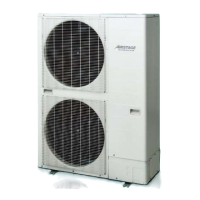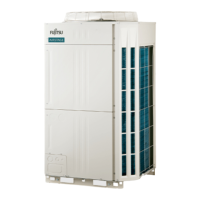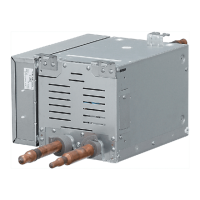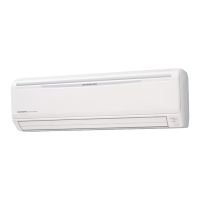3. PIPING CONNECTION
3-1. CAUTION OF PIPING
CAUTION
Keep the permissible length of every piping limitation to prevent a defect or cooling/heating
failure.
z
Piping material
● Use the designated size ( Diameter & thickness ) of refrigerant pipes.
● Those pipes purchased locally may contain dust inside. Blow out the dust by dried inert gas when using.
● To process the branch, do not use T-shaped pipe, which causes a uneven refrigerant flow.
Use the optionally available standard branch kit.
T-tube
Separation tube
Reducer
● When replacing the unit, never use piping which has been used for previous installations.
Only use the new piping.
z
Piping process stage
● Be careful to avoid the dust or water falling into the pipe when performing piping process and piping installation.
● When processing the pipe, make the number of bending portion as few as possible, and the bending radius as
large as possible.
● If the diameter of the required pipe is different from the branch unit, either cut it out or use the reducer.
z
Brazing
● While Brazing the pipes, be sure to blow dry nitrogen gas through them.
● If nitrogen gas is not blown through the pipes while they are being brazed, an oxidized layer may form on the
inside of the pipes. If this occurs, the cooling efficiency may decrease and the air conditioner unit (compressor,
valves, etc.) cause malfunction.
0.02MPa
Pressure hose
Rubber stopper
Bellows valve
Nitrogen gas
● When brazing the pipes, do not use flux. If the flux is chlorine-based, the pipes will corrode and when the flux
contains fluorine, the refrigerant oil will deteriorate, etc. Using the flux has an adverse affect on the refrigerant
piping system.
● For brazing materials, use phosphor copper solder that does not require flux.
z
Piping treatment
● The pipes vibrate, expand, and contract during operation, so if loads are concentrated in one area, it could cause
cracks in the pipes. Provide the pipe supports every 6ft. 6-3/4in to 9ft. 10-1/8in. (2 to 3m)
● Make sure to insulate the refrigeration pipes separately with ample thickness of heat-resistant polyethylene form
etc. For the connecting portion, apply the enough insulation to avoid any gap.
- (06 - 26) -
SYSTEM
DESIGN
SYSTEM
DESIGN

